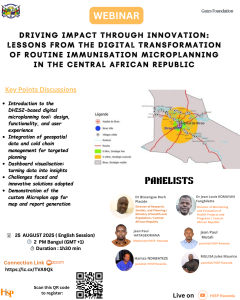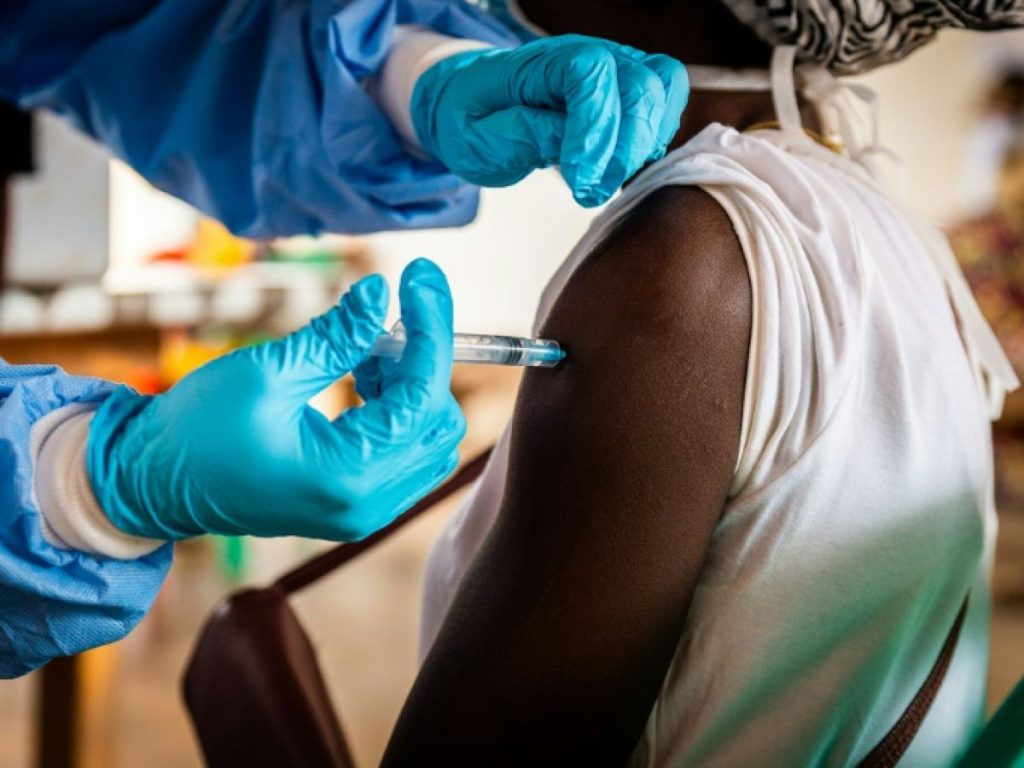The Central African Republic (CAR) is revolutionizing its immunization efforts through a groundbreaking digital transformation of micro-planning, a collaborative initiative by the Ministry of Health, the Bill & Melinda Gates Foundation, and HISP Rwanda.
This project addresses significant challenges to improve vaccination coverage and strengthen public health systems, with key insights shared during a dedicated webinar held on August 7, 2025.
Table of Contents
ToggleWebinar: Spotlight on the Transformation

To explore the design, functionality, and impact of this DHIS2-based digital micro-planning tool, HISP Rwanda hosted an engaging webinar titled “Digital Transformation of Immunization Micro-Planning in the Central African Republic.”
The event took place on August 7, 2025, at 2:00 PM Bangui Time (lasting 1 hour and 30 minutes) and offered participants an in-depth look at innovative digital solutions improving immunization planning and delivery.
Key discussions included:
Introduction to the DHIS2-based digital micro-planning tool: design, functionality, and user experience
Integration of geospatial data
Cold-chain management for targeted planning
Dashboard visualization: turning data into insights
Challenges faced and innovative solutions adopted
Demonstration of the custom Microplan app for map and report generation
Exploring scalability and adaptation in other regions and countries
Featured Speakers
Moderator: Jean Paul Hatagekimana — HISP Rwanda
Panelists:
- Dr. Bissengue Roch Placide — Director of Research, Studies, and Planning, Ministry of Health and Population, Central African Republic
- Dr. Jean Louis Komayan Fangbilette — Director of Monitoring and Evaluation of Health Projects and Programs, Central African Republic
- Jean Paul Mutali — HISP Rwanda
- Hamza Ndabateze — HISP Rwanda
- Mulisa Jules Maurice — HISP Rwanda
Held virtually via Zoom , the session attracted implementers, data managers, and M&E leads from across Africa eager to learn how this innovative tool is addressing real-world challenges in immunization.
- Total Unique Participants: 41
- Countries Represented: 21 (Rwanda, Kenya, Central African Republic, United States, Djibouti, Australia, Chad, Somalia, Norway, Germany, Comoros, Zimbabwe, Yemen, Pakistan, Gabon, Uruguay, Brazil, Uganda, Ghana, Canada, Republic of Korea, and Ethiopia)
Watch The Full video of the webinar:
🌍 Context and Key Challenges in CAR
CAR faces formidable barriers to effective immunization. A national survey revealed that only 13% of children aged 12–23 months were vaccinated, leaving 87% unreached.
Geographic and Security Constraints: Poor road infrastructure, isolated regions, insecurity due to armed groups, and refugee influxes from Sudan and South Sudan complicate outreach.
Poor Data Quality: Limited internet connectivity and a shortage of qualified personnel make it difficult to collect and manage accurate data.
Outdated Infrastructure: Many health facilities are damaged or lack cold-chain equipment, hindering vaccine storage and delivery.
💻 The Digital Solution and Its Features
To address these challenges, the traditional paper-based micro-planning system was digitized using DHIS2, creating a centralized, efficient, and reliable repository to replace scattered paper forms and Excel files.
Key features include:
Geospatial Data Integration: Incorporates GPS coordinates of villages and health facilities, combined with geographic layers (roads, rivers, and population data) to visualize distribution and determine the most suitable vaccination strategy — fixed, outreach, or mobile.
Automatic Report and Map Generation: Produces high-resolution, printable maps and reports highlighting population density and vaccination strategies to identify underserved areas.
Interactive Dashboards: Enables real-time data analysis, progress tracking, and resource management. A built-in smart decision-making tool prioritizes health facilities that need cold-chain equipment based on population and accessibility.
Implementation and Next Steps
The project began with a pilot in two districts, where trained data clerks entered data directly into DHIS2 from paper forms. A national training team was established to facilitate future rollouts and build national capacity.
Looking ahead:
Data Linkage: Connecting the micro-planning tool with the national DHIS2 instance to monitor gaps between planned and reported activities.
Offline Access: Developing an offline-capable dashboard to support areas with limited connectivity.
Expansion: Standardizing the mobile application and deploying the digital tool to all districts in CAR.
